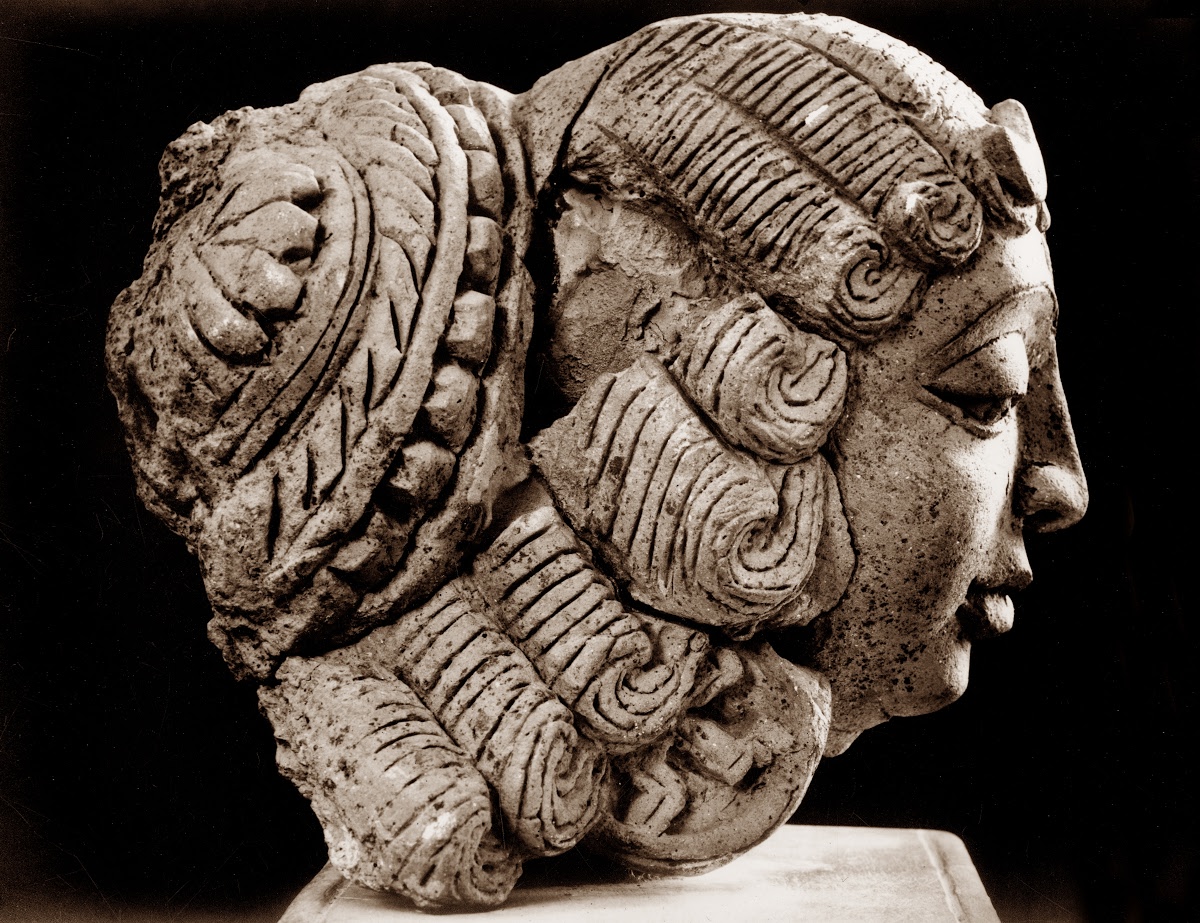~ Kesa-vinyasa: Hairstyles (coiffures) in early Indian arts
The scriptures/mural representations, ranging from the 2nd-century BC to the 17th century AD, have detailed out the everyday living of Indians. This literary data has immense value in analyzing the culture.
The scriptures/mural representations, ranging from the 2nd-century BC to the 17th century AD, have detailed out the everyday living of Indians. This literary data has immense value in analyzing the culture.

The Harappans were quite interested in unique hairstyles and using combs and mirrors for making their hair-do. The picture here shows a Mirror, hairpin & collyrium pot, dated 2700 BC. 

The dancing girl of the Harappan period is one of the finest examples of Indian art. An exclusive feature of this sculpture is her hair, coiled beautifully in a thick mass falling over the right shoulder. 

The statue of ‘Priest King’ of Mohenjodaro has a trimmed beard and hair parted in the middle tied with a fillet on the forehead. 



Kautilya’s Arthashastra mentions two styles of hairdressing by women that were prevalent in society.
Pic: One of the Yakshini from the Mauryan period.
Her neatly combed hair is seen tied beautifully forming a loop at the back.
Pic: One of the Yakshini from the Mauryan period.
Her neatly combed hair is seen tied beautifully forming a loop at the back.

The sculpture of Salabhanjika from Sanchi shown here has an elaborate hair arrangement, tied in a top fan-shaped bun in the front and open hair at the back. 

The women in the Bharhut sculptures arranged their hair in various styles. This panel, namely worshipping of Bodhi tree, shows women with neatly tied hair with a loose knot at the back. Hairs were elaborately done in those days. 



~ The Mauryan sculptures found in various parts of India give details about the hairstyle/coiffures of those periods. Hairstyles for men were as important as for women. 



The work of Panini also throws light on the subject of hairstyles. The accounts of Megasthenese and Arrian have details about the coiffures. Hala’s Gatha Saptasati presents an account of the hairstyles known to the Satavahana period.
Pic: Woman depicted in the Khajuraho temples
Pic: Woman depicted in the Khajuraho temples

Bharata’s Natyasastra describes a variety of hairstyles that enables us to know the hairstyles of the Ikshvaku period. Besides, the Divyavadana, Vatsyayana, and the Mahobhoshya have details about various hairstyles for both men and women. Look at Parvati's hairs in the second pic 



For the Gupta period, all the important works of Kalidasa have mentions of elaborated hairstyles. Similarly, the Vayu Purana, the Amarkosa, the Vishnu Dharmottara Purana, Varahamihir's Brhat Samita, and the Harshacharita give ample information in this regard. 



And finally, two of my favorite pics;
1) Lady with a long braid, Tamil Nadu (Vijayanagara period)
2) Rani ki vav, Patan (Gujarat), Solanki period

1) Lady with a long braid, Tamil Nadu (Vijayanagara period)
2) Rani ki vav, Patan (Gujarat), Solanki period


Sources:
(i) Hairstyles in Ancient Indian Art by K. Krishna Murthy
(iI) Google Arts and Culture (artsandculture.google.com/exhibit/kesa-v…)
(i) Hairstyles in Ancient Indian Art by K. Krishna Murthy
(iI) Google Arts and Culture (artsandculture.google.com/exhibit/kesa-v…)
• • •
Missing some Tweet in this thread? You can try to
force a refresh









